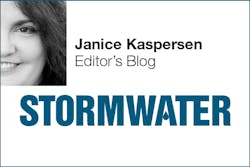
There’s no doubt that technology is changing the way we work, the way we live, and, very possibly, the way we’re going to move between the two—how we literally get from place to place. Our future modes of transportation might look a bit different from what most of us expected. They might not, for example, have anyone at the wheel.
We know about the emergence of driverless cars, and other types of vehicles are going operator-less as well. For example, Arturo Santiago, the editor of another Forester Media publication, Grading and Excavation Contractor, has given a lot of attention in recent weeks to the phenomenon as it applies to construction equipment, or “cab-less autonomous electric powered vehicles.” You can see blogs and videos about some of them here and here .
Recently this article in the New York Times looked at a similar development in the public transportation arena. An experiment is underway in Helsinki, Finland, to use driverless buses, each accommodating about 12 passengers. As the article notes, such vehicles have been used before in controlled settings like university campuses or to move employees around an industrial plant, but they’ve rarely been turned loose in traffic on a public street. The electric-powered buses in Helsinki are part of a two-year, $1.2 million project called Sohjoa, funded by various governments and the European Union. One goal of the project is to reduce the number of private vehicles and greenhouse gas emissions within cities. The buses can’t go just anywhere, as cars being developed by Google and other companies are expected to do, but instead will follow fixed routes, using laser sensors and GPS to keep them in the right place and help them avoid other vehicles. Likely uses include taking users of other forms of public transportation such as trains or conventional buses closer to their homes, offices, or schools—“last mile service,” as the article calls it.
What does this have to do with stormwater management? Perhaps not a lot on the face of it, but take a step back and look again. Several years ago, a group of planners, architects, and engineers wrote a series of articles for Stormwater magazine focusing on stormwater as part of the bigger picture of urban development, looking not only at specific, lot-level stormwater measures, but also at the type of development that’s most conducive to good stormwater management.
The kickoff article, written by Martin Dreiling and titled “Taking a Stance on Sprawl,” compared the type of suburban development that became common in the US after World War II to what he called traditional neighborhood development. Suburban development typically features single-family homes, shopping malls, and business parks separated enough that they require the use of cars to move between them. He contrasts this pattern to multi-use traditional neighborhoods: “By taking advantage of neighborhood schools, parks, plazas, and human-scaled streets, they reduce the total amount of land per unit (or enterprise) required to deliver highly functional and highly desirable results.” The traditional neighborhood “uses dramatically less land and, therefore, generates less disruption to watersheds.”
John Jacob expanded on this idea in a later article titled “Watersheds, Walkability, and Stormwater,” which explored the relationships between impervious cover, pollutant loads, and population densities. Although densely populated traditional neighborhoods might have a higher percentage of impervious cover than spread-out suburban ones, he says, “The kind of densities required for walkable urbanism may actually translate into less of a pollutant load, on a per capita basis, than that from an equivalent population at lower, suburban densities, and therefore less of a total pollutant load for a given population.”
Which brings us back to the 12-passenger driverless bus. The NYT article also explores similar projects to the one in Helsinki; if this model catches on, on a large enough scale, it could lend support to the desirability of denser, traditional neighborhoods. It’s probably unrealistic to expect that, for most of us, everything we need—home, work, shopping, school—will all be within reasonable walking distance even if we’re not living in the suburbs, but readily available networks of vehicles like these could make it more feasible to ditch the car and, for some at least, to make higher-density city living look more appealing. If so, it will require a long-term shift in development trends, but one worth considering in future urban—and specifically stormwater—planning.
StormCon 2017 Call for Papers Is Open
StormCon, the only North American event dedicated exclusively to stormwater and surface-water professionals, is seeking abstracts for presentation at StormCon 2017, which will take place in Seattle on August 27–31, 2017. The deadline for submitting abstracts is Wednesday, December 7, 2016.
We are accepting abstracts in six conference tracks: BMP Case Studies, Green Infrastructure, Stormwater Program Management, Water-Quality Monitoring, Industrial Stormwater Management, and Advanced Research Topics. For descriptions of the tracks and more information about submitting an abstract, please visit www.stormcon.com.
About the Author
Janice Kaspersen
Janice Kaspersen is the former editor of Erosion Control and Stormwater magazines.